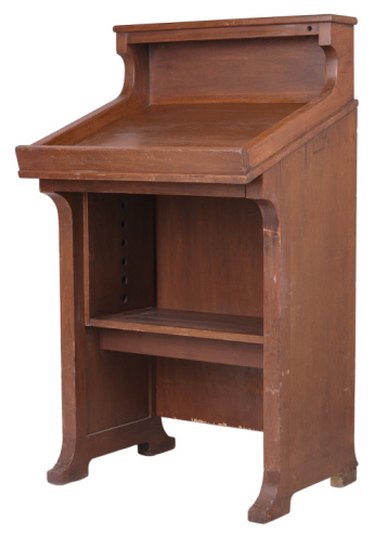Things You'll Need
Paste wax
Fine steel wool
Polishing cloth
Lemon juice
Olive oil
Cloth
600-grit wet/dry sandpaper
Lemon oil
Nail polish remover
Nutmeat
Wax crayon
Shoe polish

Maple is one of the harder domestic hardwoods, and furniture made from it tends to last a long time. It isn't unusual to find multiple scratches on a piece of old or antique maple furniture because, in all likelihood, it has been well used. The good news is that most scratches on maple are superficial and usually don't extend deeply into the wood simply because the wood is so hard. You can usually hide these scratches by making cosmetic repairs to the finish. If the wood does happen to be scratched, you can usually camouflage the scratch without sanding.
Step 1
Rub the piece of furniture with paste wax to hide superficial scratches and give the finish a new life. Apply the wax with fine steel wool and buff it with a polishing cloth.
Video of the Day
Step 2
Mix lemon juice and olive oil in equal parts and rub the solution over the scratches with a cloth, going with the grain of the wood. If the scratches aren't discolored, they are probably only in the finish, and the solution will remove them.
Step 3
Sand out scratches in a polyurethane or lacquer finish with 600-grit wet/dry sandpaper. Moisten the paper with water or lemon oil and sand with the grain of the wood. If the sanding dulls the surrounding finish, you can restore the sheen by rubbing on paste wax after you have sanded out the scratch.
Step 4
Soften a lacquer or shellac finish with nail polish remover to remove a scratch. Dab the remover on the scratch with the brush that comes in the jar. It will partially dissolve the finish, which will then level out to eliminate the scratch. Apply the remover sparingly so you don't damage the surrounding finish.
Step 5
Rub a scratch that extends into the wood and appears lighter in color than the surrounding wood with a nutmeat. You can use a walnut, Brazil nut or almond. The oil from the nut will penetrate the wood and darken the scratch. Rub in the same direction as the scratch and keep the nut away from the surrounding wood.
Step 6
Camouflage a scratch in the wood by rubbing it with a wax crayon that is the same color as the wood. You can also use shoe polish, if you can find one that closely matches the wood color.
Tip
Touch up scratches in the wood that you have camouflaged by dabbing them with clear nail polish. When the polish dries, rub the repair with fine steel wool and then apply a coat of wax.
Warning
Use solvents like nail polish remover sparingly or you may end up having to repair the finish.
Video of the Day